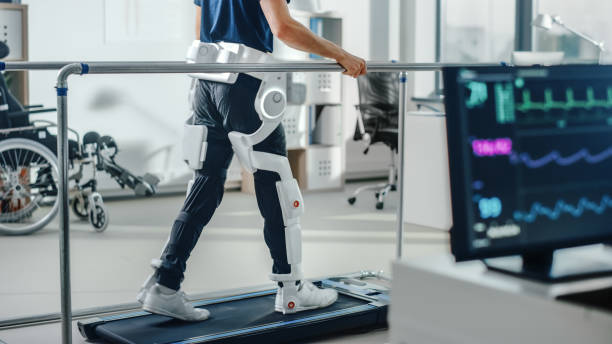Key Features to Consider in Used Portable Oxygen Concentrators
Portable oxygen concentrators (POCs) have revolutionized life for those requiring supplemental oxygen therapy. Unlike traditional oxygen tanks, these compact devices extract oxygen from the surrounding air, making them ideal for active individuals. When considering a used portable oxygen concentrator, several factors require careful attention to ensure you're making a wise investment. The pre-owned POC market offers significant cost savings, but buyers must be vigilant about key features and functionality to avoid potential issues down the road.

Essential Features to Look for in Used Portable Oxygen Concentrators
When evaluating used portable oxygen concentrators, certain features should take priority. Battery life is perhaps the most crucial aspect, as it determines how long you can remain mobile between charges. Most quality POCs offer between 2-8 hours of battery life, depending on the flow setting. Oxygen output specifications are equally important—continuous flow units deliver steady oxygen, while pulse dose models provide oxygen only when you inhale, conserving battery power. Weight is another critical consideration, with devices ranging from 3-10 pounds. Lighter units offer greater portability but might provide less oxygen output or shorter battery life. Finally, check that any used unit includes essential accessories like carrying cases, extra batteries, and chargers.
Where to Find Used Portable Oxygen Concentrators
Several reliable sources exist for purchasing pre-owned portable oxygen concentrators. Medical equipment resale companies specialize in refurbished devices, often providing warranties and certifications that the units meet manufacturer specifications. Online marketplaces like eBay and Facebook Marketplace regularly feature listings, though these require more buyer diligence regarding condition and authenticity. Many oxygen supply companies maintain “certified pre-owned” programs with thoroughly tested equipment and limited warranties. Some manufacturers also offer factory-refurbished models that undergo rigorous testing before resale. Regardless of source, requesting maintenance records and verifying remaining warranty coverage is essential before purchase.
Understanding Used Portable Oxygen Concentrator Prices
The price of used portable oxygen concentrators varies significantly based on several factors. Model age substantially impacts cost, with units 1-2 years old typically selling for 60-70% of retail, while 3-5 year old models may cost 40-50% of original price. Brand reputation also influences pricing—premium brands like Inogen, Respironics, and ResMed generally command higher resale values due to their reliability and performance records. Technical specifications greatly affect pricing, with continuous flow units and those offering higher oxygen output typically costing more than basic pulse dose models. Finally, the unit’s condition and any remaining warranty coverage can significantly impact the final price point.
How to Find the Right Price for Used Portable Oxygen Concentrators
Determining a fair price for a used portable oxygen concentrator requires research and comparison. Begin by identifying the retail price of equivalent new models, then expect discounts of 30-60% depending on age and condition. Gathering multiple quotes from different sellers provides crucial market context—prices can vary by hundreds or even thousands of dollars for identical models. When evaluating offers, factor in any included accessories, as extra batteries alone can be worth several hundred dollars. Consider the unit’s maintenance history and remaining operational lifespan. Most quality POCs last 4-7 years with proper care, so a 3-year-old unit might have considerable useful life remaining if well-maintained.
Evaluating Condition and Performance of Pre-Owned Concentrators
Before finalizing any purchase, thoroughly assess the unit’s condition and performance. Check the hour meter (if available) to determine usage—units with over 15,000 hours may require more frequent maintenance or component replacement. Test oxygen output using an oxygen analyzer to verify it meets the manufacturer’s specifications. Many used POCs still achieve 90-95% oxygen purity when functioning correctly. Examine battery performance by fully charging and testing runtime at various flow settings. Inspect all physical components for damage, including connections, filters, and the control panel. Finally, listen for unusual noises during operation, which could indicate internal component wear.
Comparison of Popular Used Portable Oxygen Concentrator Models
| Model | Typical Used Price Range | Weight | Max Oxygen Output | Avg. Battery Life | Features |
|---|---|---|---|---|---|
| Inogen One G3 | $1,200-1,800 | 4.8 lbs | 1-5 settings | 4.5 hours | Pulse dose only, highly portable |
| Philips SimplyGo | $1,500-2,200 | 10 lbs | 2 LPM continuous | 3.5 hours | Both continuous & pulse dose |
| Inogen One G5 | $1,800-2,500 | 4.7 lbs | 1-6 settings | 6.5 hours | Advanced pulse dose technology |
| SeQual Eclipse 5 | $1,700-2,400 | 18.4 lbs | 3 LPM continuous | 5 hours | High oxygen output, less portable |
| Respironics EverGo | $900-1,400 | 10 lbs | 5 pulse settings | 8 hours | Long battery life, older model |
Prices, rates, or cost estimates mentioned in this article are based on the latest available information but may change over time. Independent research is advised before making financial decisions.
Maintenance Considerations for Second-Hand Oxygen Concentrators
Proper maintenance is vital for ensuring longevity in used portable oxygen concentrators. Most units require regular filter changes—typically every 1-2 weeks for external filters and every 6-12 months for internal filters. Professional servicing should occur annually, costing approximately $100-300 depending on the model and service provider. Consider purchasing an extended warranty if available, as compressor or sieve bed replacements can cost $500-800 if needed. Request documentation of recent servicing before purchase, and budget for immediate maintenance if service records are unavailable. Some models allow for user-replaceable components, while others require certified technician service, affecting your long-term maintenance costs.
This article is for informational purposes only and should not be considered medical advice. Please consult a qualified healthcare professional for personalized guidance and treatment.




